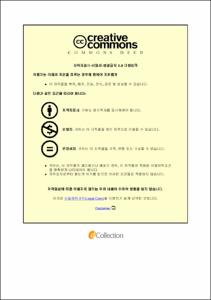LED와 레이저 다이오드 광원을 이용한 자동차용 전조등 광학계 설계
- Abstract
- The development of Nichia's blue light-emitting diodes (LEDs) has become the most promising solid-state lighting technology, combining white LEDs with blue LED chips and YAG phosphors. However, the LED has a high operation current, which causes a problem of efficiency deterioration due to a decrease in quantum efficiency internally or externally due to temperature rise of the device. The temperature rise also causes a change in the peak wavelength and has a detrimental effect on the phosphor. In contrast, laser diodes do not experience this efficiency loss. In this paper, a downward light is implemented using a projection type optical system. We optimized the optical system by using LED and laser diode respectively. In the case of downward laser diode, a further study on the phosphor screen has been carried out. As a result, the result of conversion into 576.03 nm yellow light was obtained, which is the result that the blue light of the laser diode can be converted into white light. The implementation and analysis of the ECE-R112 regulation was conducted through an optimized optical system. Both of the rays were satisfactory in terms of the requirements, and the selection of the light source according to the usage environment was realized. In addition, it was confirmed that the optical efficiency of the laser diode is about four times as high as that of a specific environment.
Nichia의 청색 발광 다이오드 (LED)의 개발은 백색 LED와 청색 LED 칩 및 YAG 형광체를 결합한 가장 유망한 고체 조명 기술이 되었다. 그러나 LED는 높은 동작 전류를 가지므로 소자의 온도 상승으로 인한 내부 또는 외부 양자 효율 저하로 인한 효율 저하 문제를 야기한다. 온도 상승은 또한 피크 파장의 변화를 일으키고 인광 물질에 악영향을 미친다. 반대로 레이저 다이오드는 이러한 효율 손실을 경험하지 않는다. 본 논문에서는 투사형 광학 시스템을 이용하여 하향 빛을 구현하였다. 우리는 각각 LED와 레이저 다이오드를 사용하여 광학 시스템을 최적화하였다.. 하향 레이저 다이오드의 경우, 형광체 스크린에 대한 더 많은 연구가 수행되었다. 그 결과, 576.03 nm의 황색 광으로 변환 된 결과를 얻어졌으며, 이는 레이저 다이오드의 청색광이 백색광으로 변환 될 수 있는 결과임을 확인하였다. ECE-R112 규정의 구현 및 분석은 최적화 된 광학 시스템을 통해 수행되었다. 두 광선 모두 규정의 요구 조건에 대하여 만족하였으며 사용 환경에 따른 광원 선택이 실현되었다. 또한, 특정 환경을 조성한 결과 레이저 다이오드의 광 효율은 LED 하향등의 광 효율에 비해 약 4배 우수한 것으로 확인되었다.
- Issued Date
- 2018
- Awarded Date
- 2018.2
- Type
- Dissertation
- Publisher
- 부경대학교
- Affiliation
- 부경대학교 과학기술융합전문대학원
- Department
- 과학기술융합전문대학원 LED융합공학전공
- Advisor
- 김종태
- Table Of Contents
- 목차 ⅰ
표 목차 ⅱ
그림 목차 ⅲ
초록 ⅴ
1. 서론 1
2. 이론 4
1. 자동차용 조명의 이해 4
1.1 자동차 전조등의 연구 동향 4
2. 자동차용 전조등 광학계의 이해 9
2.1 자동차용 전조등 광학계 9
2.1.1 자동차용 전조등 광학계의 종류 9
2.1.2 자동차용 전조등 광학계의 설계 프로세스 및 성능 분석 13
3. 청색 레이저 다이오드의 백색광 구현 18
3.1 레이저 전조등의 필요성 18
3.2 형광체와 레이저 다이오드 구동에 의한 백색광 구현 20
3.2.1 형광체 개요 20
3.2.2 형광체의 발광원리 22
3.2.3 가우스 빔의 형상화 23
3.2.4 레이저와 형광체의 백색광 구현 25
3. 자동차 전조등 광학계 설계 27
1. 목표 규정 설정 27
1.1 ECE-R112 Regulation 27
2. 광원 모델링 30
2.1 Ray data 설정 30
3. 하향등 모델링 32
3.1 반사면(Reflector) 설계 및 최적화 32
3.2 프로젝션 렌즈(Projection lens) 설계 및 최적화 34
3.2.1 프로젝션 렌즈의 최적화 34
3.2.2 색 분리 완화를 위한 프로젝션 렌즈 설계 37
4. 레이저 다이오드 모델링 38
5. 형광체(Phosphor) 모델링 40
4. 결과 및 고찰 42
1. LED ray data 및 전조등 시뮬레이션 42
1.1 전조등 모델링 42
1.2 프로젝션 렌즈의 추가 설계를 통한 색 분리 완화 44
2. 레이저 다이오드 설계 46
2.1 설계된 레이저 다이오드의 평가 46
2.2 YAG:Ce 형광체 설계 48
3. 레이저 다이오드 전조등 시뮬레이션 50
3.1 레이저 다이오드 하향등 시뮬레이션 50
4. LED 하향등과 레이저 다이오드 하향등 분석 52
4.1 시뮬레이션 결과 분석 52
5. 결론 56
감사의 글 58
6. 참고 문헌 59
- Degree
- Master
- Appears in Collections:
- 과학기술융합전문대학원 > LED융합공학전공
- Files in This Item:
-
-
Download
 LED와 레이저 다이오드 광원을 이용한 자동차용 전조등 광학계 설계.pdf
기타 데이터 / 2.84 MB / Adobe PDF
LED와 레이저 다이오드 광원을 이용한 자동차용 전조등 광학계 설계.pdf
기타 데이터 / 2.84 MB / Adobe PDF
-
Items in Repository are protected by copyright, with all rights reserved, unless otherwise indicated.